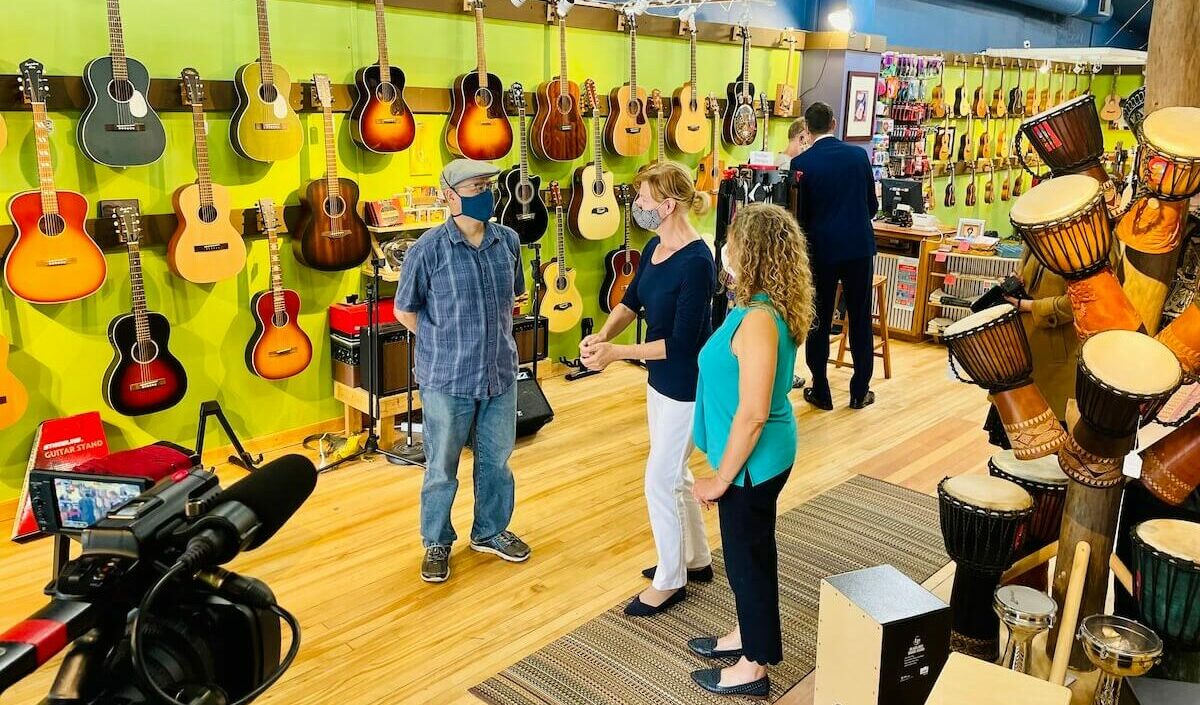Our Call to Action
Rural America has great potential to lead in building a more just, sustainable, and broadly prosperous future for the entire country. But too many of our rural communities have been held back by a lack of attention to the unique circumstances they face, as well as the investment needed to meet those challenges and opportunities. And too many rural communities have been actively harmed by the policy choices of elected leaders, often from both parties, that have resulted in corporations exploiting our people, land, and resources, and moving our jobs to other countries.
In 2021, Rural Democracy Initiative helped convene a group of diverse rural leaders and advocates from across the country for the first-ever Rural Policy Action Summit to lay out a roadmap of popular policies that could renew our rural communities and help the country address existential shared challenges — from food security, to economic inequality, to climate change. And in the first two years of the Biden administration, with tireless work from rural advocates, we witnessed a dramatic change of direction for rural places as many of these policies were enacted, including the most significant investments in rural America in a generation.
Now, the country is at an important crossroads with enormous implications for the future of rural communities. Will we continue on the path of reinvestment, inclusion, and prioritizing working people? Or will forces of extremism and unchecked corporate greed block these efforts and keep us divided?
With this crossroads as a backdrop, we helped convene the second Rural Policy Action Summit in 2023, and again in 2025, to renew a call for a more sustainable, just, and prosperous future for rural America. We hope this report will help provide a fresh perspective to those who want to better understand how rural communities can benefit from the policies we’re lifting up, and take action.
In all parts of the country, we must redouble our advocacy to ensure that rural people can access tools and resources from the policy victories we already have won, like the Inflation Reduction Act, so we can build thriving communities for everyone. And we need to keep advancing a policy agenda that protects our democracy and core freedoms, and centers the needs of everyday working people, small businesses, and family farmers — the backbone of our communities and engines of our economy.
Working together, we can build an economy from the bottom up and middle out, not the top down. We can build an economy that doesn’t leave rural communities behind. And we can end an era of unrestrained corporate power, level the playing field, and ensure people have the power to set a course toward clean air and water, better health, and a more prosperous future for everyone.
This report is full of rural people and policy recommendations that should inspire continued public, private, and philanthropic investment. Join this committed coalition of rural advocates taking action. With sustained engagement from political and nonprofit leaders, rural communities can and will help create this future for us all.
–Sarah Jaynes, Rural Democracy Initiative

Main Street Alliance
STATE POLICY
State Innovation Exchange (SiX) and Rural Democracy Initiative created a resource guide for state policymakers and advocates. The Blueprint for Rural Policy Action in the States serves as an addendum to the federally-focused Rural Policy Action Report. Building on the 2021 federal report’s key priorities and challenges, this report provides detailed research on the rural policy priorities and offers examples of strategic and popular policies introduced and enacted to address these issues at the state level.
How states can improve the lives of rural people
For decades, federal policymakers have made decisions to disinvest in rural communities. Disinvestment has contributed to rural population decline, leading to further disinvestment, in a vicious cycle of depopulation.
States can help to fill in the gaps.
Many of the decisions that most directly impact the lives of rural people are made at the state level, from Medicaid expansion and hospital funding to factory farm siting and enforcement of clean water rules to broadband expansion. Today, these decisions often reflect priorities of big business and lobbying groups, but it doesn’t have to be that way.
Rural communities from New York to Oregon share many common concerns, but the particulars are different from region to region. State legislators are well-positioned to learn just what their rural regions need and what assets they have, by listening to rural residents and local small businesses, building relationships with organizations and stakeholders — and, in many cases, through their own rural lived experience. This knowledge can turn into new policies, rules enforcement, services, and funding to have the greatest impact on their rural populations.